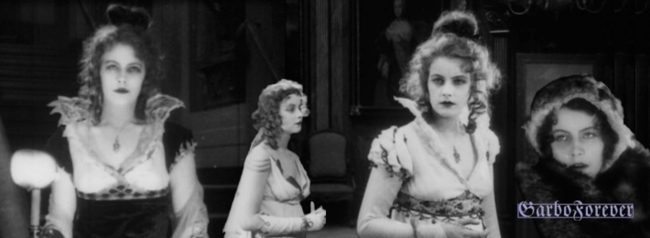
GÖSTA BERLINGS SAGA
|
|
ALTERNATE TITLE |
Gösta Berling(GERMANY)
The Story of Gösta Berling (USA)
The Legend of Gösta Berling (USA)
The Gosta Berling's Saga (USA)
The Atonement of Gosta Berling(USA)
La légende de Gösta Berling (FRANCE)
La saga di Gösta Berling (ITALY)
Gdy zmysly graja (POLAND)
A Saga de Gösta Berling (BRAZIL)
Gösta Berlingin taru (FINLAND)
La Leyenda de Gösta Berling (SPAIN)
|
FILM SCENES |
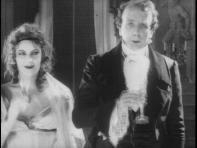 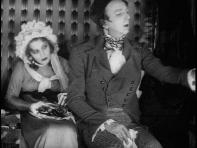 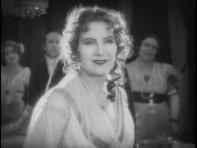 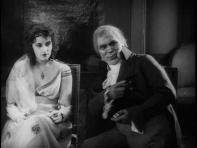
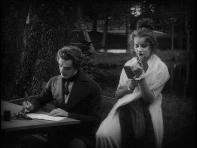 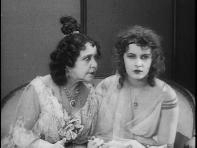 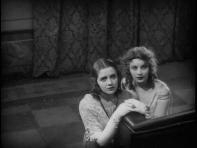 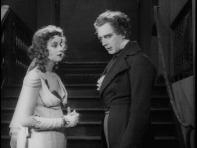
  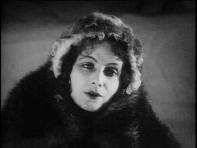 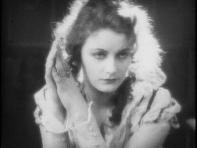
|
COMPANY |
Svensk Filmindustri
|
CREDITS |
Directed by Mauritz Stiller.
Adaption by Mauritz Stiller and Ragnar Hyltén-Cavallius, from the novel by Selma Lagerlöf.
Photography by J. Julius (Julius Jaenzon).
Second Unit Cameraman: Carl Axel Söderström.
Art Directon by Ragnar Brattén, Erik Jerken and Vilhelm Bryde.
Costumes by Ingrid Günther.
Special effects: Olof Ås and Nils Elffors.
Original music store arranged by Rudolf Sahlberg and Gaston Borch.
Historical consultant: Gustaf Upmark.
|
TECHNICAL SPECS |
Sweden: 166 min (2 parts) 12 reels Silent Film
Sweden: 130 min (TV version)
185 min (Swedish Film Institute restoration)
Spain: 88 min (VHS version)
|
CAST |
Lars Hanson - Gösta Berling
Gerda Lundeqvist - Majorskan; Margaretha Samzelius
Greta Garbo - Countess Elisabeth Dohna
Mona Mårtenson - Ebba Dohna
|
| GARBO'S CHARACTER |
Countess Elisabeth Dohna
|
FILM POSTER |

|
SYNOPSIS |
Gosta Berling (Lars Hanson), a minister, loses his position in the church. Because of his overindulgence in alcohol. He becomes involved in high society and the women that belong to it. He meets Countess Dohna (Greta Garbo) and falls in love with her. He sees in her qualities lacking in other women he has known. Eventually, it is she who helps him to redeem himself.
|
| PREMIERED/RELEASED |
March 10, 1924 (Part 1), and March 17, 1924 (Part 2), at the Röda Kvarn in Stockholm/ Sweden.
Release date in Germany: 18.09.1924 (Part 1), 25.09.1924 (Part 2).
|
| LOBBYCARDS |
| See HERE!
|
PRODUCTION |
| Production dates: Part 1: September–October 1923 and Part 2: December 1923–February 1924
Production Location: Forsmark/Uppsala län in Sweden
|
| MOVIE STILLS |
| The Still photographer is unknown.

More HERE!
|
TRIVIA |
 Garbo's second starring film and first under her new name - Garbo. Garbo's second starring film and first under her new name - Garbo.
 On November 9 ,1923, Anna Gustafson signed a petition to change Greta's last name to Garbo. On November 9 ,1923, Anna Gustafson signed a petition to change Greta's last name to Garbo.
 An edited version was released in the United States in 1928. An edited version was released in the United States in 1928.
 On July 23, 1923 signed a standard player's contract with Svensk Filmindustri. On July 23, 1923 signed a standard player's contract with Svensk Filmindustri.
 Garbo's salary was 3,000 Swedish Kronor. Garbo's salary was 3,000 Swedish Kronor.
 Years later, rumours were that Greta had developed a crush on Mona Mårtenson during filming. Years later, rumours were that Greta had developed a crush on Mona Mårtenson during filming.
 The final version of Gösta Berlings saga was nearly four hours (14 reels) long. The final version of Gösta Berlings saga was nearly four hours (14 reels) long.
 Distributed in various lengths to twenty-eight countries worldwide. Distributed in various lengths to twenty-eight countries worldwide.
 Carl Brisson – Greta's childhood idol, was also offered the part of Gösta Berling. Carl Brisson – Greta's childhood idol, was also offered the part of Gösta Berling.
 The Budget was rumoured to be the largest ever by Svensk Filmindistri's. The Budget was rumoured to be the largest ever by Svensk Filmindistri's.
 Swedish actor Gösta Ekman, was also considered for the lead. Swedish actor Gösta Ekman, was also considered for the lead.
 After only 4 weeks, Gösta Berlings Saga had grossed 750,000 Reichsmarks in Germany alone. After only 4 weeks, Gösta Berlings Saga had grossed 750,000 Reichsmarks in Germany alone.
 Sometimes titled The Story, The Legend, or The Atonement of Gösta Berling. Sometimes titled The Story, The Legend, or The Atonement of Gösta Berling.
 The 1970s restored version from the Swedish Film Institute, rans over three with a 10-minute intermission between parts I and II. The 1970s restored version from the Swedish Film Institute, rans over three with a 10-minute intermission between parts I and II.
 Gösta is pronounced with a soft G–'yoes-ta'. Gösta is pronounced with a soft G–'yoes-ta'.
 At first Stiller wanted to cast Lars Hanson as Gösta. Stiller, who had directed Hanson in four films, but then he didn't think he At first Stiller wanted to cast Lars Hanson as Gösta. Stiller, who had directed Hanson in four films, but then he didn't think he
fulfilled the physical requirements of the role. He considered a number of other actors, including Gösta Ekman, before settling
on Carl Brisson – Greta's childhood idol. But Brisson was unable to secure a release from his current theatrical contract. After
all, Lars Hanson was chosen.
 Years later, rumors would emerge that Greta had developed a crush on her co-star Mårtenson during filming. Years later, rumors would emerge that Greta had developed a crush on her co-star Mårtenson during filming.
 The year 1924 was the year in which American films stormed Germany. The film premiered in Germany on August 19. On the The year 1924 was the year in which American films stormed Germany. The film premiered in Germany on August 19. On the
next day (August 20, 1924), Cecil B. DeMille's The Ten Commandments also premiered in Berlin. There was a huge fanfare at
the Schauspielhaus Theatre. This was calculated to show the quality of a European film next to that of a mammoth Hollywood
production.
|
BACKGROUND STORY |
|
The first meeting of Stiller & Garbo |
Spring 1923, shortly after the Easter vacation from the Dramaten school, Greta received a message from Academy director Gustaf Molander to prepare herself for a new audition: director Mauritz Stiller wanted to see her. Greta went to his apartment and talked with an impressed Stiller. “There is something quite extraordinary about that girl. I must discover what it is,” Mauritz Stiller declared after Greta left. A few days later, the director asked her to come out to the studios in Råsunda at 10:00 A.M. for a screen test . “I was pleased, but not even yet very excited,” Greta stated later.
The Screen-test |
Some time after Greta arrived in Filmstaden were the film was going to be shot, the director ordered the test begin. They made her up and then they took her [inside] and told her to lie in a bed and be sick. Greta didn't know what it was all about. It seemed to herlike a big joke, to come off the street and be right away sick. She was ashamed [to] try and put herself over . Stiller waited for her to find her rhythm, and when she didn't, yelled at her in frustration: “My God, don't you know what it is to be sick?” Then, Greta stated, “I became a very sick lady.”
Greta didn't think she had done very well but however, Stiller had determined that he had indeed found the actress to play, the supporting Role, Elisabeth Dohna in Gösta Berlings saga. One condition Stille made clear to Greta during subsequent conversations: if she wanted to participate in Gösta Berlings saga she would have to lose weight. She agreed and on July 23, 1923 Greta signed a standard player's contract with Svensk Filmindustri.
The Novel |
Swedes hold Gösta Berlings saga in the highest regard; Selma Lagerlöf had been the first writer to break the spell of stern realism cast over Scandinavian literature in the nineteenth century and make her stories a vehicle for a return to romanticism. Gösta Berling , her first and possibly finest work, was a heroic tale that proceeded through folklore, feuds, and fires – gathering up in its rich and sprawling narrative a tale of Värmland, the untamed land on the western perimeter of Sweden, at the end of the Napoleonic era. Finding the right actor to play the troubled hero of Lagerlöf's novel would be something of a national obsession and could only be equated with the search for Scarlett O'Hara fifteen years later in America .
Production started |
Production finally began in mid-August. The delays with the film had as much to do with securing Selma Lagerlöf's approval on the screenplay by Stiller and Ragnar Hyltén-Cavallius as from the complications of casting. After a series of talks between Stiller and Lagerlöf, the writer agreed to Svensk Filmindustri's production of Gösta Berling – but not before a thorough examination of the screenplay and a written promise from the director that he would remain faithful to the approved adaptation.
Principal photography on Gösta Berlings saga was scheduled for August through October of 1923, with a break in mid-October and November while the company awaited the season's first snowfall; the winter shoot would continue through the beginning of February. Forty-eight sets would be constructed. With a budget rumoured to be the largest in Svensk Filmindistri's brief history.
Stiller's Creation |
For some time Stiller had dreamed of molding an actress into his feminine ideal. As filming continued, Stiller would note with pride that the young actress was solely his creation and Stiller took a jealous care of Greta. He scarcely permitted anyone else even to speak to her, and would hardly leave her out of his sight for a moment. The pair inevitably earned a nickname: “Beauty” and “the Beast.” Stiller was always teaching and preaching, Greta solemnly listening and learning. According to an observer, however, the film was a tortuous experience for Greta – she was nervous, restless, and “she cried a great deal.” Stiller was, in his own words, merciless with her, pushing her farther and farther along. He fussed over her costumes; he needled her about what she ate until she was inclined not to eat at all; he studied her makeup, her walk, her gestures.
One day, she actually broke down in front of the company and cursed him. It was a scene made all the more memorable because the usually mild-mannered actress wasn't known to lose her temper. “It was a love-hate affair,” Greta stated, “at times he loved me as much as I hated him.” He pushed her hard because he believed the results would be worth it.
Garbo |
In October, during the film's hiatus, Stiller asked Greta to think about changing her name. It was not the first time she had considered it – in fact, many women during this period were adopting more distinctive surnames. Stiller had also pondered an appropriate name for her. Scenarist Arthur Nordén related that the director wanted a name that was “modern and elegant and international.” After a long search and many legends how the name was found, Anna Gustafson signed a petition, on November 9, asking the ministry to allow her daughter to legally change her name to Greta Garbo. The petition was formally approved by the Ministry of Justice on the twenty-first of December. By that time, Greta Garbo was back at work on Gösta Berlings saga.
The snow arrived in mid-December and the filming went on. It did not go unnoticed that Stiller had a proprietary interest in Greta. Their relationship would become to talk of the community as the director prepared his film for its March 1924 premiere. There were rumors of a romantic relationship. Some weeks later, filming was completed.
The Premiere |
The final version of Gösta Berlings saga was nearly four hours (fourteen reels) long; Part I debuted on March 10, 1924, at the Röda Kvarn Theatre in Stockholm , Part II opened one week later. Stiller escorted his star to both premieres. Critical reaction in Sweden would be polite but restrained; the majority of reviews labeled the film “a beautifully staged failure.” While the director was complimented on his handling of the love scenes, critics still complained about the liberties he had taken in distilling Lagerlöf's epic down to a more manageable length; Selma Lagerlöf was also displeased. Stiller's discovery earned scattered praise in the Swedish press. One critic saw Garbo as “a promise for the future,” another as “ a semiplump and unseasoned bun.”
The critics were mixed but ironically, the film was better received outside of Sweden . It was a hit in Copenhagen and Helsinki , and would be distributed in various lengths to twenty-eight countries worldwide. On March 20, at the suggestion of actress Mary Johnson, a German producer named David Schratter wrote Stiller inquiring if he would be interested in making some films for Trianon Film A.-G., reputed to the Germany 's largest production company. Stiller was already considering his next subject: a story of Russian refugees trapped in Turkey called Odalisken från Smolna. In April, he travelled to Berlin to meet with Schratter.
|
| BUSINESS DATA |
Budget:15,000 Swedish Kronor
|
| PORTRAITS |
Portrait photographer: Henry B. Goodwin, Olaf Ekstrand
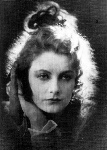
More HERE!
|
| REVIEWS
|
|
Splendid acting and a great woman novelist are the combination that make The Story of Gösta Berling far and away the best Swedish picture of the year. Selma Lagerlöf's brilliant novel lends itself well to screen adaptation. It is a period play of the early nineteenth century in Sweden. The quaint costumes of the day have been excellently reproduced, and the charming backgrounds faithfully reconstructed. The carefully balanced and well-selected cast is headed by Jenny Hasselquist, Lars Hanson, and Greta Gustafsson.
|
Variety: |
Interest lies chiefly in the background, foreign locales unfamiliar to this side. Also interesting is the appearance of Greta Garbo, totally unlike the sleeky dame M-G-M's experts made of her. Still a picture only for the sure-seat circle.... Story based on what is described as a Nobel Prize novel. Must be another case of a great literary effort lost between the scenario and the cutting room.... Clergyman angle led to the Fifth Avenue Playhouse billing the picture as the doings of a “glorified Elmer Gantry.”
|
| PICTURE FROM THE FILM-SET |
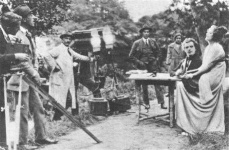
More HERE!
|
STORY FROM THE FILM-SET |
With the part actually in hand, Greta allowed herself the privilege of being excited, then diligently set about the task of slimming down before production began. “She wanted to become figure-perfect in Stiller's eyes as quickly as possible,” Vera Schmiterlöw said. Mimi Pollak, who was performing in Helsingborg that summer, received a letter from Vera acknowledging that the pair were taking Turkish baths at Sturebadet hoping to lose weight. “I'm not getting anywhere,” Vera reported, “I've actually put on four kilos. But Greta just gets thinner and thinner. You can't see her breasts anymore. They're just two buttons.” Greta's goal was to lose twenty pounds but she did not have enough time to reach this.
|
GRETAS SCREENTEST FOR GÖSTA BERLING SAGA |
Greta's screen-test with Stiller for Gösta Berling Saga , was made in early summer of 1923. Stiller told her to lie into the bed and play “sick”. Greta thought that this was a big joke and was ashamed to try and put herself over. Stiller waited for her to find her rhythm and when she didn't, he yelled at her in frustration: “My God, don't you know what it is to be sick?” Greta later stated that after Stiller yelled at her, she became a very sick lady. Stiller's Screen-test with Garbo is lost.
|
GRETA'S CONTRACT |
On July 23, 1923, seventeen year-old Greta signed a standard player's contract with Svensk Filmindustri offering her 3,000 kronor for her services. They would pay all necessary travel expenses; she would be expected to adhere to their rules and regulations concerning conduct, and agreed to furnish her own clothes, formal if need be, for promotional appearances.
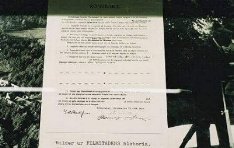
A photograph of a reproduction of Greta's contract with Svensk Filmindustri 1923.
|
| ALTERNATIVE SCENES |
Many scenes from the original version were cut for the final version. The final version of Gösta Berlings saga was nearly four hours (14 reels) long and was distributed in various lengths to twenty-eight countries worldwide.
|
| GÖSTA BERLING SAGA GOWN |
| This costume from Gösta Berling Saga costume belongs to Svensk Filmindustri (Stockholm).
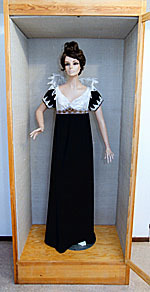
See more "Garbo Gowns" HERE!
|
| THE SCORE BY MATTI BYE |
The score for the film on the restored DVD version, is much influenced by Swedish traditional music, and composer Matti Bye has said in an interview that he was much influenced by the Swedish folk music tradition when he was composing to this silent film, particularly the traditional music from Värmland (the Swedish province where the film and story is set) and that he wanted the music to colour the grand nature and historic time feeling we get from Värmland; costumes, houses, grounds, etc., in all the different scenes, to make the story soulful and living; in order to get to the feeling that he felt director Mauritz Stiller wanted to present to the audience.
In the beginning of the film, the first music you hear (after the intro music of the text/credits) is an instrumental version (slightly re-arranged by Bye) of the classic Ack Värmland du sköna (played by cello/violin) and this is one of the most traditional songs of Värmland and one of Sweden's most famous national hymns as well (it's the first melody you hear after the credits when the film starts; in the large panorama shot that is slowly sweeping over the woods of Värmlandin and the shot of the rapids).
I think he uses it again somewhere later in the film also, to some other scene, this short string of the verse melody... but Bye makes the melody a bit more dramatic and a bit darker in the arrangement than the original tune. The rest of the music, except for that short melody string from Ack Värmeland du sköna, is new all new compositions by Bye especially for the film. (which is amazing because all the music really sound like old Swedish folk songs; truly classic masterpieces every one of them; amazing musical scoring!!) By Cresta.
|
| SELMA LAGERLÖF |
Selma Ottilia Lovisa Lagerlöf (1858 – 1940) was a Swedish author and the first woman writer to win the Nobel Prize in Literature. Known internationally for Nils Holgerssons underbara resa genom Sverige (a story for children, in translation The wonderful adventures of Nils Holgersson), she was awarded the Nobel Prize in 1909 "in appreciation of the lofty idealism, vivid imagination and spiritual perception that characterize her writings."
Selma wrote Gösta Berling Saga in 1891.
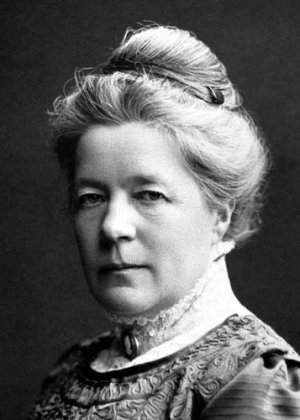
|
| THE ORIGINAL NOVEL |
Based on the novel Gösta Berling saga (Gösta Berling), by Selma Lagerlöf.
|
DVD/VHS |
An edited version only, is available on the Gösta Berling Saga DVD.

See HERE!
|
| |
| VIDEO-FILE |
See More HERE!
|
| |
SOURCES |
|

|
Karen Swenson – A life Apart
Barry Paris – Garbo
IMDB – International Movie Database
plus many other books, magazines and internet sites. |
|
